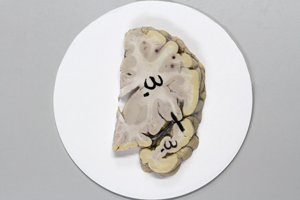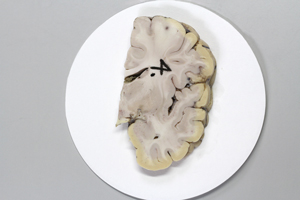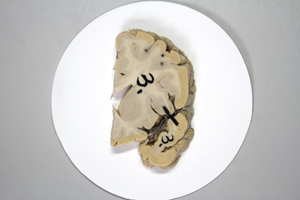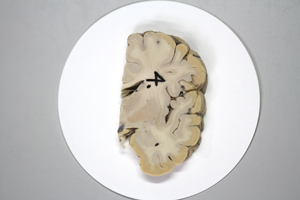⑤ Dehydration
Completely remove water from the tissue through replacment with ethanol to enable the permeation of paraffin, which is immiscible with water, into the tissue.
Method
|
 |
|---|---|
|

 |
|


|
Dehydration timeframe
- There is no strict timeframe for dehydration. However, with small tissue, dehydration takes approximately half a day, whereas, with big tissue, the tissue should be placed into the next solution after approximately one day.
- Please note that shortening the dehydration time can lead to poor specimens.
Guide for dehydration time
- Large (e.g., cerebrum):8–24 hours
- Medium (e.g., cerebellum):4 hours
- Small (e.g., brain stem, spinal cord):3 hours
Dehydration process
| Solution used for dehydration | Tissue sizes | ||
|---|---|---|---|
| Large | Medium | Small | |
| 70% ethanol | ○ | ○ | ○ |
| 80% ethanol | ○ | ○ | ○ |
| 95% ethanol Ⅰ | ○ | ○ | ○ |
| 95% ethanol Ⅱ | ○ | ○ | ○ |
| 95% ethanol Ⅲ | ○ | ○ | ○ |
| 95% ethanol Ⅳ | ○ | ||
| 100% ethanol Ⅰ | ○ | ○ | ○ |
| 100% ethanol Ⅱ | ○ | ○ | ○ |
| 100% ethanol Ⅲ | ○ | ○ | ○ |
| 100% ethanol Ⅳ | ○ | ||
Important points concerning dehydration
- Dehydration is not possible during the clearing procedure. Therefore, it is essential to remove all of the water content from the tissue during this step.
- It is better to use fresh ethanol in the 100% ethanol IV bath rather than reusing the ethanol.
- The tissue shrinks more as the ethanol concentration increases. There is particularly notable tissue shrinkage during the 95% ethanol I bath. Therefore, place the cut surface of the tissue in contact with the flat surface of the container to prevent tissue deformation during shrinking.
Tissue size immediately after the cutting out procedure.


Tissue size after immersion in 100% ethanol. The tissue immersed in 100% ethanol is obviously shrunken compared with the tissue immediately after the cutting out procedure.



